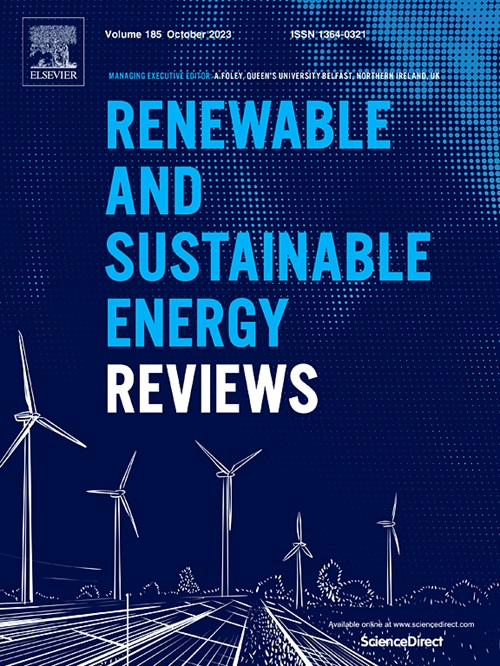A new framework for the technical biogas potential: Concept design, method development, and analytical application in a case study from Germany
IF 16.3
1区 工程技术
Q1 ENERGY & FUELS
引用次数: 0
Abstract
A flexible framework for estimating the technical and unused biomass potential for biogas production with high spatial resolution has been developed to integrate biomethane into future energy systems. By classifying agricultural biomass into non-competitive biomass (NCB), livestock-competitive biomass (LCB), and food/feed-competitive biomass (FCB), the model accounts for their competing uses in livestock production and food security. Applied to Bavaria, the analysis covers 2,229 municipalities, using data from agricultural enterprises, biomass yields, and biogas production. The results show an unused methane potential of 1.58·109 m3 from agricultural NCB and LCB, potentially covering 12.2 % of Bavaria's natural gas consumption in 2021. A Monte Carlo simulation was performed to account for uncertainty in the underlying data and to perform a sensitivity analysis. The results highlight that agricultural policy decisions, particularly those affecting livestock production, significantly influence the technical biogas potential: Decreases in manure and slurry formation may reduce the potential, but this could be offset by the availability of unused biomass from livestock feed, depending on policy choices. The presented framework may be used for different regions given availability of data, while the results offer valuable insights for policymakers and stakeholders for developing the biogas sector and its integration into a renewable energy system in the studied region.
求助全文
约1分钟内获得全文
求助全文
来源期刊

Renewable and Sustainable Energy Reviews
工程技术-能源与燃料
CiteScore
31.20
自引率
5.70%
发文量
1055
审稿时长
62 days
期刊介绍:
The mission of Renewable and Sustainable Energy Reviews is to disseminate the most compelling and pertinent critical insights in renewable and sustainable energy, fostering collaboration among the research community, private sector, and policy and decision makers. The journal aims to exchange challenges, solutions, innovative concepts, and technologies, contributing to sustainable development, the transition to a low-carbon future, and the attainment of emissions targets outlined by the United Nations Framework Convention on Climate Change.
Renewable and Sustainable Energy Reviews publishes a diverse range of content, including review papers, original research, case studies, and analyses of new technologies, all featuring a substantial review component such as critique, comparison, or analysis. Introducing a distinctive paper type, Expert Insights, the journal presents commissioned mini-reviews authored by field leaders, addressing topics of significant interest. Case studies undergo consideration only if they showcase the work's applicability to other regions or contribute valuable insights to the broader field of renewable and sustainable energy. Notably, a bibliographic or literature review lacking critical analysis is deemed unsuitable for publication.
 求助内容:
求助内容: 应助结果提醒方式:
应助结果提醒方式:


